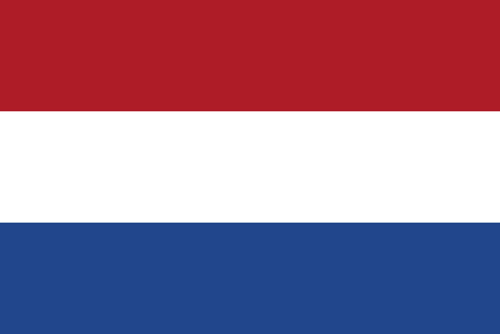
ART.2007.04.
Who's Afraid of Red, White and Blue
UltraChrome Print on dibond, glossy coating.
Size 73.35 x 110 cm
Edition 2/5
__________________________________________________________________
The title is on the first place a reference to the later series of work by Barnett Newman; 'Who's Afraid of Red, Yellow and Blue'. The work which mostly earned its fame because 'Who's Afraid of Red, Yellow and Blue IV' was damaged with a plastic bar at the National Gallery in Berlin on April 13, 1982 and "Who's Afraid of Red, Yellow and Blue III" with a stanley knife at the Stedelijk Museum of Amsterdam on March 21, 1986. Whereby the disputed restoration caused a controversy. "Cathedra" suffered the same fate on November 21, 1997. The American artist Barnett Newman (New York City, 1905 - 1970) is being kept as one of the leading figures in abstract expressionism and one of the most important within color field painting, which is a variation within abstract expressionistic painting in the U.S.. Hereby color areas or color fields are being used to cause a meditative state by the viewer. However, in this work instead of the primary colors there has been chosen to use the colours of the Dutch flag. By doing so the question that's being asked is; 'Who's afraid of the Dutch flag?' And so the work refers to the topical issue of national identity and the corresponding foreigner problem. But instead of the fear of the foreigner the roles have been swopped and the question is raised whether the foreigner shouldn't be afraid of the Dutchman by now. Besides this, 'Who's Afraid of Red, White and Blue' has associations with another American artwork from approximately the same period. Namely the work 'Flag' (1954-55) from neo-dadaist / pop artist Jasper Johns, which consists of the depicting of the 'Stars and Stripes' as a painting. The work originated from the thought of using popular iconography as art and taking a subject matter which could be easily neutralized to a pure painterly object in contrary to the more personal abstract expressionism. You could state that both movements eventually have led to minimalism which 'Who's Afraid of Red, White and Blue' definitely reminds of; in this version of the Dutch flag the personal expression has been reduced to a minimum also. This element gives the work a sterilized cleanliness, which in the perspective of the theme delivers a clear interpretation. Thereby the glossiness of the flag in combination with the dibond have resulted in the strong resemblance of the work with a seductive consumption goods. In this way it communicates Holland as a product, the turning commercial of our national identity. For the measurements of this work as well as The European Kingdom™ the official proportions have been taken that apply for the used flags (EU and Holland), 2 : 3. These proportions are not the same for every flag though, for example 'The Union Jack' has a ratio of 1 : 2 and the German flag one of 3 : 5.
__________________________________________________________________